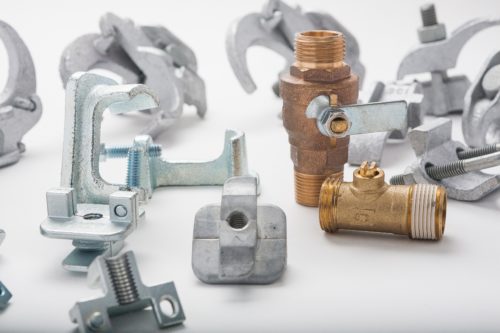Why Cast?
15 March 2022

Casting is most often used for making complex shapes that would be difficult or uneconomical to make by other methods.
Precision engineered castings are found everywhere. Your car, for example. The water pump, alternator, air conditioning clutch, perhaps the brackets holding these devices, manifolds and more, all are prime examples of highly engineered precision castings.
The same is true in trucks, trains – some train body beds are made from a single casting , planes, and construction equipment. But that’s not even the tip of the macro scale. In the US alone there are over 57,000 wind turbines, nuclear reactors, defense products and many other items.
Our infrastructure is well populated with pipes, fittings, valves, hydrants, and this extends all the way into our homes. Even our appliances are made in part of casted material. And that computer you’re using to read this? It’s probably got one or more heat sinks made of casted aluminum dissipating the heat generated. The American Foundry Society states that 90% of all manufactured durable goods and nearly all manufacturing machinery are produced by means of engineered castings.
Some of these applications are simple and not complex. Traditional casting methods like lost-wax (investment), plaster mold or sand casting may be simply the most cost-effective way of producing them. This makes casting a very common method of fabricating parts in developing countries.
But technology can supercharge the casting process, drastically increasing the output and minimizing the production cost.
Centrifugal casting, vacuum-assist and pressure can greatly speed the casting process. High volume applications use non-expendable molding engineered to properly flow the material quickly and completely to create the desired form.
Casting process simulation software helps calculate component quality and can accurately predict the resulting mechanical properties. Various inspection methods depending upon material can be used to prevent defects, including liquid penetrant, magnetic particle, radiography, and ultrasonic testing.
Fast-Rite casting engineers are experts in mold design and engineering the production process to produce the right result, whether it’s smaller than a thumbnail or that proverbial train bed. The goal is to produce the casting you want with the strength needed, the exact dimensions and appearance characteristics you desire – a consistent, reliable output meeting the production volume and the expected costs every time.
Fast-Rite’s casting menu includes:
- Aluminum Gravity Casting
- Sand Casting
- Permanent Mold Casting
- Aluminum Die Casting
- Zinc Alloy Die Casting
- Investment Casting
- Stainless Steel Investment Casting
- Alloy Steel Investment Casting
- Carbon Steel Investment Casting
Fast-Rite’s precision casting methodology is designed to maximize savings on each step of the process including not only the precision casting itself but also material inventory, working procedure, packing and transportation.
Casting allows a wide variety of materials to fit the use case intended, including but not limited to:
- Aluminum alloy A356, A360, A380, ADC10, ADC12, etc.
- Carbon steel, alloy steel, stainless steel, heat resistant steel
- Zinc, Zinc #3, Zinc #5, Magnesium Alloy
- ZL101, 102, 104 with T4/T5/T6 treatment
Finish treatments include:
- Chrome Plating
- Electrophoresis
- Electropolish
- Passivation (Aluminum)
- Painting
- Polishing
- Powder Coating
- Shot Blasting
- Sandblasting
Do you want to ensure reliable, cost-effective precision stamping for your application? Contact the Fast-Rite Engineering staff to discuss the best solutions for your particular use case. Phone 888.327.8077 or email sales@fast-rite.com